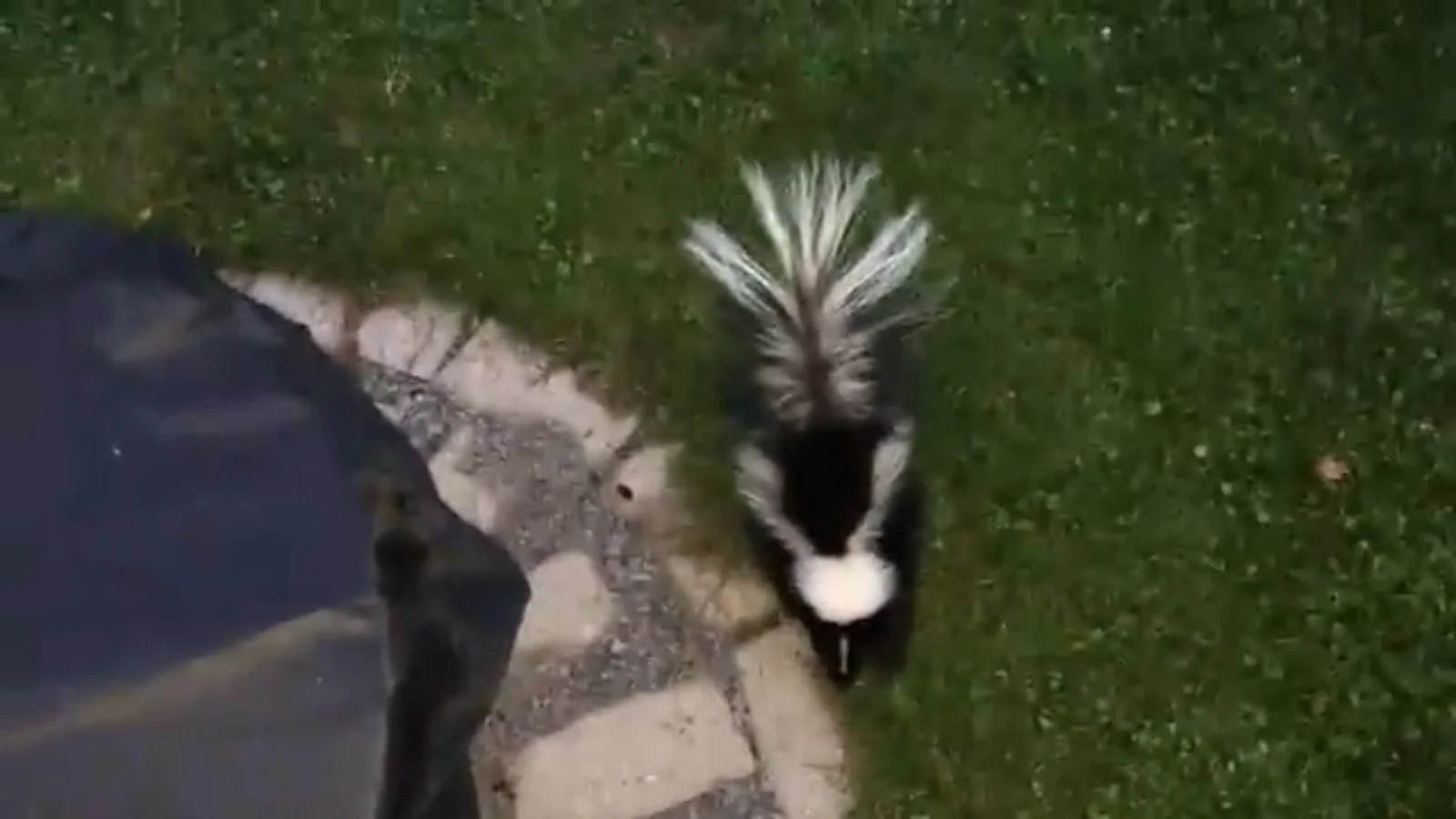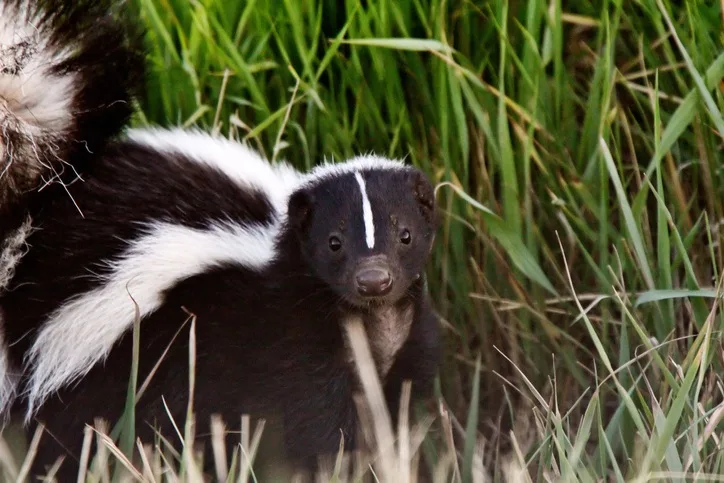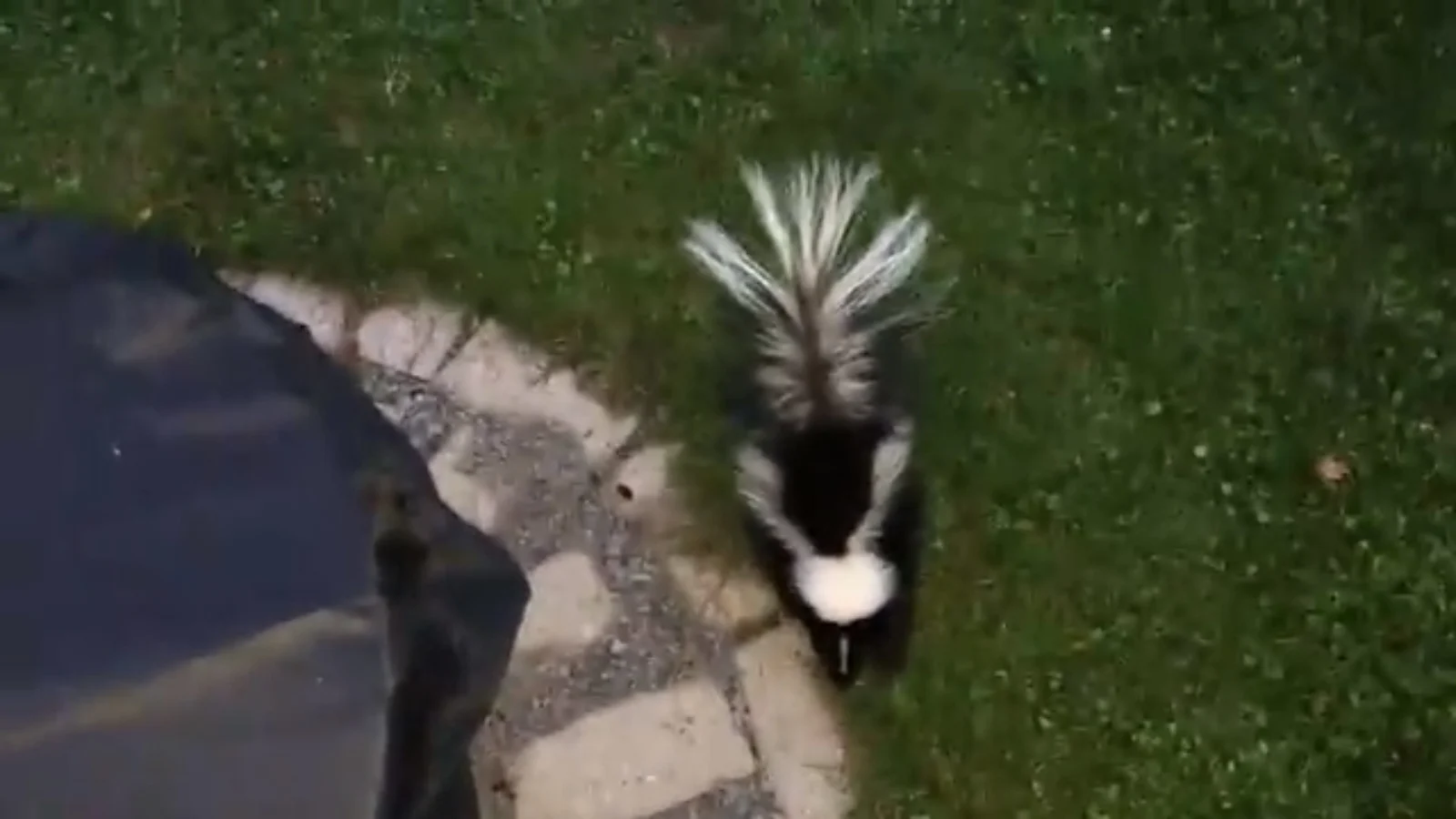
Watch for these skunk warning signs to avoid getting sprayed
An encounter with a skunk doesn't have to end badly.
Skunks have a rather nasty defence mechanism, but there are ways of avoiding it if we take some precautions and watch for the right signs.
Going on a hike, walking around the block, or even just popping into the backyard — any of these activities can result in a skunk encounter. These relatively docile animals can be found in nearly every part of Canada. While they are more likely to be seen in rural areas or in the wilderness, cities and towns offer plenty of safe spaces for them to use as a den. They also represent abundant supplies of food.

Credit: Getty Images
When it comes to defending themselves against predators, skunks have a few disadvantages. In general, their eyesight is rather poor, only allowing them to see clearly out to about 3 metres. Also, while they can scuttle along at a decent pace on their short legs, they're not really built to be sprinters. So, they're unlikely to spot a threat at a distance or be able to quickly escape from one should a confrontation occur. However, they make up for these shortcomings with a rather distinctive defence mechanism: their spray.
If presented with a persistent threat, a skunk can spray a foul-smelling liquid from its scent glands. This liquid, which contains sulphur-based chemicals known as thiols, has similar properties to tear gas. Unfortunately, keeping your distance from the skunk may not help. These glands are capable of hitting a target up to six metres away!
Before this happens, however, there are a few obvious signs that a spraying is imminent.
The first thing a skunk typically does when it feels threatened is to raise and puff out its striped tail as an instant warning sign to stay away.

Threat display! Credit: Olga Derevianko
The skunk may also stomp its front feet or perform a quick, aggressive-looking charge at the perceived threat. It may hiss or growl as well.
When confronted with a skunk displaying any of these signs, back away and give the frightened animal as much space as possible. It is explicitly putting on these displays with the idea of avoiding the need to spray! So, help it and yourself by staying away.
Don't bother watching for a skunk to make a 'hand stand' before it sprays. The striped skunks that are so common in Canada don't perform that particular acrobatic stunt before they spray. Instead, they just turn tail and spray as they're running away. It's the more squirrel-sized spotted skunks, which are found in the eastern United States and in some parts of southern Manitoba and northwestern Ontario, that are the acrobats of the skunk family.
Related: How to get skunk stink out, with science!
As for keeping pets from being sprayed, we are their best defence.
Since skunks are primarily nocturnal, encounters with them will mostly happen in the hours just before sunset and at night. Therefore, when going for a walk with your pets at those times, pay careful attention to your surroundings. Also, keeping your pet on a leash and close by will allow you to steer them away from any potential skunk encounter.
Also, if you let your pets out into the backyard, give the area at least a quick glance beforehand (although a more thorough scouting is better). That way, if a skunk is digging for grubs or just strolling across your property, you can hopefully spot them first and wait until they move on, thus avoiding any possibility of getting sprayed.






